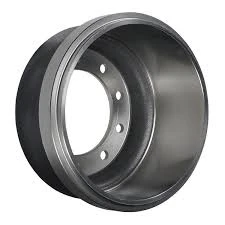
-
 Afrikaans
Afrikaans -
 Albanian
Albanian -
 Amharic
Amharic -
 Arabic
Arabic -
 Armenian
Armenian -
 Azerbaijani
Azerbaijani -
 Basque
Basque -
 Belarusian
Belarusian -
 Bengali
Bengali -
 Bosnian
Bosnian -
 Bulgarian
Bulgarian -
 Catalan
Catalan -
 Cebuano
Cebuano -
 Corsican
Corsican -
 Croatian
Croatian -
 Czech
Czech -
 Danish
Danish -
 Dutch
Dutch -
 English
English -
 Esperanto
Esperanto -
 Estonian
Estonian -
 Finnish
Finnish -
 French
French -
 Frisian
Frisian -
 Galician
Galician -
 Georgian
Georgian -
 German
German -
 Greek
Greek -
 Gujarati
Gujarati -
 Haitian Creole
Haitian Creole -
 hausa
hausa -
 hawaiian
hawaiian -
 Hebrew
Hebrew -
 Hindi
Hindi -
 Miao
Miao -
 Hungarian
Hungarian -
 Icelandic
Icelandic -
 igbo
igbo -
 Indonesian
Indonesian -
 irish
irish -
 Italian
Italian -
 Japanese
Japanese -
 Javanese
Javanese -
 Kannada
Kannada -
 kazakh
kazakh -
 Khmer
Khmer -
 Rwandese
Rwandese -
 Korean
Korean -
 Kurdish
Kurdish -
 Kyrgyz
Kyrgyz -
 Lao
Lao -
 Latin
Latin -
 Latvian
Latvian -
 Lithuanian
Lithuanian -
 Luxembourgish
Luxembourgish -
 Macedonian
Macedonian -
 Malgashi
Malgashi -
 Malay
Malay -
 Malayalam
Malayalam -
 Maltese
Maltese -
 Maori
Maori -
 Marathi
Marathi -
 Mongolian
Mongolian -
 Myanmar
Myanmar -
 Nepali
Nepali -
 Norwegian
Norwegian -
 Norwegian
Norwegian -
 Occitan
Occitan -
 Pashto
Pashto -
 Persian
Persian -
 Polish
Polish -
 Portuguese
Portuguese -
 Punjabi
Punjabi -
 Romanian
Romanian -
 Russian
Russian -
 Samoan
Samoan -
 Scottish Gaelic
Scottish Gaelic -
 Serbian
Serbian -
 Sesotho
Sesotho -
 Shona
Shona -
 Sindhi
Sindhi -
 Sinhala
Sinhala -
 Slovak
Slovak -
 Slovenian
Slovenian -
 Somali
Somali -
 Spanish
Spanish -
 Sundanese
Sundanese -
 Swahili
Swahili -
 Swedish
Swedish -
 Tagalog
Tagalog -
 Tajik
Tajik -
 Tamil
Tamil -
 Tatar
Tatar -
 Telugu
Telugu -
 Thai
Thai -
 Turkish
Turkish -
 Turkmen
Turkmen -
 Ukrainian
Ukrainian -
 Urdu
Urdu -
 Uighur
Uighur -
 Uzbek
Uzbek -
 Vietnamese
Vietnamese -
 Welsh
Welsh -
 Bantu
Bantu -
 Yiddish
Yiddish -
 Yoruba
Yoruba -
 Zulu
Zulu
self energising drum brakes
Self-Energising Drum Brakes Enhancing Vehicle Safety and Performance
Self-energising drum brakes represent a significant advancement in automotive braking technology, providing improved safety, performance, and efficiency. Understanding how these brakes work and their applications can help highlight their importance in modern vehicles.
The Mechanism Behind Self-Energising Drum Brakes
Self-energising drum brakes operate on a fundamental principle of physics known as self-energisation. When the brake pedal is pressed, the brake shoes inside the drum are pushed outward against the inner surface of the rotating drum. As the drum turns, the leading shoe is designed to engage first, using the rotation of the drum to exert additional pressure against the shoes. This engagement multiplies the force applied to the shoes, resulting in enhanced braking power with less force needed from the driver.
This amplifying effect occurs because the rotation of the drum pulls the leading shoe into the drum, effectively increasing the contact area and friction. Consequently, this design allows for a more compact brake system that can provide substantial stopping power while requiring a smaller actuator force, reducing driver fatigue and enhancing vehicle control.
Advantages of Self-Energising Drum Brakes
1. Enhanced Braking Efficiency The self-energising mechanism means that these brakes can achieve higher braking forces with less input from the braking system. This increases the overall braking efficiency, especially important in emergency situations where quick stops are necessary.
2. Reduced Wear and Tear Since the brakes utilize the energy from the drum's rotation to aid in the braking process, they experience less wear compared to non-self-energising systems. This leads to prolonged life for both the brake pads and the drum itself, ultimately lowering maintenance costs for vehicle owners.
self energising drum brakes

3. Space Efficiency Drum brakes are generally more compact compared to disc brakes, making them easier to fit within smaller wheel assemblies. This space efficiency can be especially beneficial for smaller vehicles and can contribute to more aerodynamic vehicle designs.
4. Cost-Effectiveness While the initial installation costs may vary, self-energising drum brakes can lead to fewer repairs and replacements over time due to their durability and efficiency. This makes them an attractive option for manufacturers and consumers alike.
Applications in Modern Vehicles
Self-energising drum brakes are commonly found in a variety of vehicles, especially in those that require reliable performance without significantly increasing costs. They are particularly prevalent in smaller vehicles, commercial trucks, and older models that leverage the simplicity and reliability of drum braking systems.
In light vehicles, self-energising drum brakes may be used often in rear wheel applications due to their effective design in providing adequate stopping power while maintaining control. In commercial vehicles, they are valued for their ability to manage the significant loads associated with heavy hauling.
Future Prospects
As automotive technology continues to advance, there is a growing interest in integrating self-energising systems with electronic and automated braking solutions. The potential for hybrid systems that combine the advantages of both drum and disc brakes could enhance the overall stability and safety of vehicles, especially in automated driving contexts.
In conclusion, self-energising drum brakes play a vital role in modern automotive design, offering a mix of efficiency, durability, and performance. Their unique braking mechanism not only enhances driver safety but also ensures that vehicles can meet the demands of today's roads effectively. As the industry progresses, these systems may evolve further, paving the way for safer and more efficient vehicles in the future.
-
What Are Drum BrakesNewsJul.07,2025
-
Understanding Brake Drum MaterialNewsJul.07,2025
-
Semi-Trailer Brake Drum: A Key Component for Extreme Loads and Long-Distance TransportNewsJul.07,2025
-
Drum Brake Pads for SaleNewsJul.07,2025
-
Brake Drums for SaleNewsJul.07,2025
-
Brake Drum ManufacturerNewsJul.07,2025
-
Aluminum Brake Drums: The Future of High-Performance CarsNewsJul.07,2025
